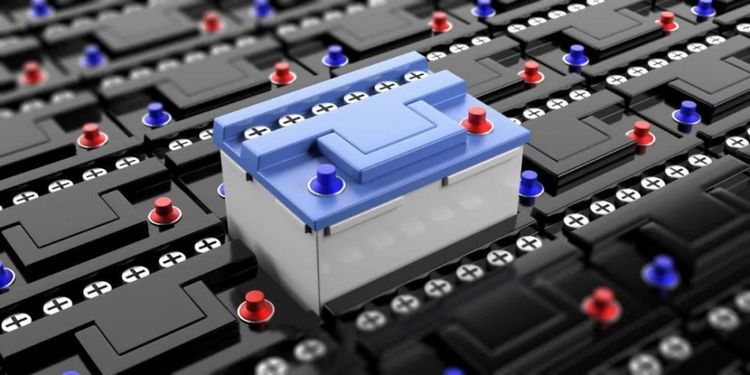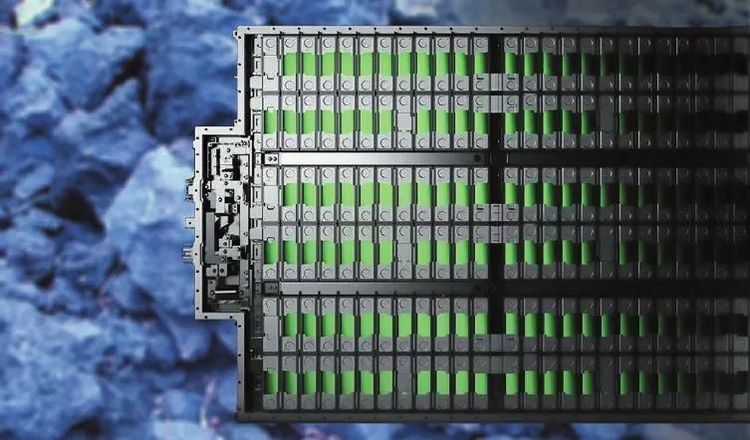LMFP Batteries are Expected to be Favored
CHINA AUTOMOTIVE NEWS 2023-09-19

Power battery "JiangHu" stirs up waves again! With the release of manganese materials, the highly anticipated lithium manganese iron phosphate (LMFP) battery is about to embark on a large-scale journey of "getting on board".
New Development Direction of Positive Electrode Materials
At present, the main raw materials for the two types of manganese iron phosphate lithium battery cells mentioned above in China are basically available for supply, and are used for production and preparation processes in two different technical routes.
The preparation process of lithium manganese iron phosphate battery cells can be roughly divided into solid-phase method and liquid-phase method. The raw material commonly used in solid-phase method is manganese dioxide, which has advantages such as low reaction temperature, simple process, and low cost. However, there are shortcomings such as large grain size and insufficient reaction. Therefore, except for some companies that have limited conditions or self-developed upgrade processes, most battery companies are currently using the liquid phase method.
The raw material is high-purity manganese sulfate, which generates lithium manganese iron phosphate through chemical reactions using organic solvents. It has the advantages of small grain size and sufficient reaction.
Its shortcomings are due to the extensive use of organic solvents, which slightly increases costs. However, some companies are already optimizing their processes to control costs.

Combining the advantages of two mainstream battery technologies
The latest data shows that from January to June this year, among the cumulative installed capacity of power batteries in China, ternary lithium batteries were 48GWh, accounting for 31.5% of the total installed capacity, a year-on-year increase of 5.2%; During the same period, the cumulative installed capacity of lithium iron phosphate batteries was 103.9 GWh, accounting for 68.3% of the total installed capacity, a year-on-year increase of 61.5%.
It can be seen that the installed capacity of lithium iron phosphate batteries exceeds that of ternary lithium batteries by more than twice, because their comprehensive performance is superior. And lithium manganese iron phosphate battery is essentially an extension of the technology of lithium iron phosphate battery, adding manganese not only inherits many advantages of lithium iron phosphate battery, but also has more advantages. The reason why lithium manganese iron phosphate is favored by many enterprises is because it combines the safety of lithium iron phosphate and the high energy density of ternary lithium batteries, making it one of the upgrading directions for power batteries. In terms of safety, lithium iron phosphate batteries are superior to ternary lithium batteries; And lithium manganese iron phosphate batteries, like lithium iron phosphate batteries, have good thermal stability and safety, and are non-toxic, environmentally friendly, and safe. No matter in situations such as acupuncture or overcharging, lithium manganese iron phosphate batteries will basically not experience spontaneous combustion or deflagration. In terms of cycle life, lithium manganese iron phosphate batteries also have a relatively high cycle life at room temperature, with an average cycle life of over 3000 cycles in theory, higher than the 2000 cycles of lithium iron phosphate batteries and the 1500 cycles of ternary lithium batteries.
Previously, whether it was ternary lithium batteries or lithium iron phosphate batteries, many of their core technology patents still belonged to foreign enterprises, forming certain technical barriers. However, Chinese enterprises have achieved new breakthroughs in the research and development of many core technologies for lithium manganese iron phosphate batteries and are among the world's advanced countries. In terms of energy density, lithium manganese iron phosphate batteries are superior to lithium iron phosphate batteries and ternary lithium batteries. The electrode voltage of the lithium manganese iron phosphate battery is about 4.1V, which is higher than that of the lithium iron phosphate battery by about 3.4V. The platform voltage is increased by 20%, and the energy density of the same volume and mass is increased by 20% compared to the lithium iron phosphate battery. This means that the lithium manganese iron phosphate battery will have a longer driving range. In terms of low-temperature performance, the energy density of lithium manganese iron phosphate batteries is 15% to 20% higher than that of lithium iron phosphate batteries; At -20 ℃, the capacity retention rate of lithium manganese iron phosphate batteries can reach nearly 80%, while the capacity retention rate of lithium iron phosphate batteries is 60% to 70%, and the performance of ternary lithium batteries is even worse. In terms of material costs, both manganese and iron are cheaper and more resource rich than lithium. Adding manganese, which is cheaper and can optimize battery performance, reduces the use of expensive lithium and has significant cost reduction benefits. It also alleviates the tight supply of lithium and the procurement cost burden brought by high lithium prices to enterprises. With the continuous optimization of the process for lithium manganese iron phosphate batteries, they are about to enter the stage of mass production, and their manufacturing costs are expected to be further reduced.

The commercialization prospects are promising
To some extent, industrial demand is the biggest driving force behind the accelerated commercialization of new technologies and products.
Under the continuous pursuit of safer, longer driving, cheaper, more environmentally friendly, and fast charging performance in the new energy vehicle industry, new products of power batteries are constantly emerging. From the perspective of materials and structure, in addition to traditional ternary lithium batteries, lithium iron phosphate batteries, semi-solid batteries, sodium ion batteries, condensed state batteries, etc., there is a good development momentum, as well as all solid state batteries, graphene batteries, etc. are currently under research and development.
From the perspective of existing technology, lithium manganese iron phosphate batteries have significant market development potential for a considerable period of time in the future. Although there are a variety of power battery products in the current market, and the products named by various battery companies themselves are also "diverse" and "competitive" in terms of names, lithium manganese iron phosphate batteries still cannot be underestimated. The reason why it is favored by many enterprises is because it has good development prospects and is expected to demonstrate more advantages in cost reduction, efficiency improvement, and environmental protection in commercialization. The field of power batteries itself has the characteristic of rapid technological iteration. With the improvement of enterprise innovation capabilities, more advantageous new varieties of power batteries are constantly emerging, which is not only an objective law of development but also a trend to adapt to industrial needs.
Issued by Frank, M&S, Sep. 19, 2023.
Disclaimer: This article only represents the author's personal view and has nothing to do with the website. This website is published for the purpose of transmitting more information, which does not mean to agree with its views or to confirm its description. The content of the article is for reference only. Please check the relevant contents by the reader.
Read